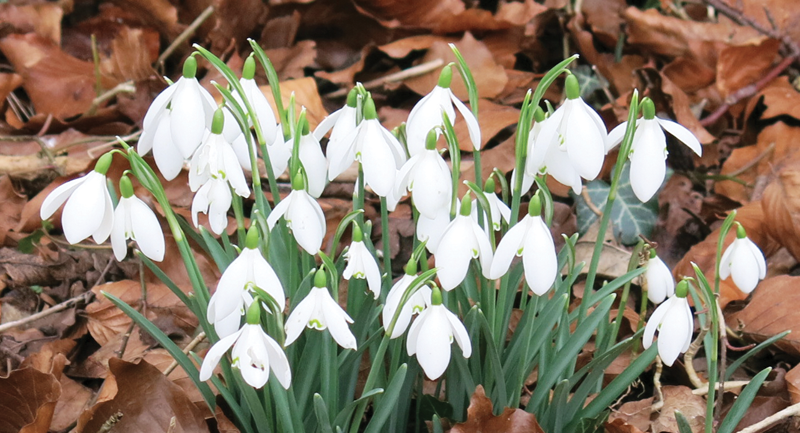- A feature from the February 2016 issue of Suffolk Norfolk Life magazine
 Click to view this issue »
Click to view this issue » - Category
- Nature, Places
The spectacular snowdrops at Walsingham Abbey in North Norfolk…
The word pilgrim, unfailingly, brings the hero of John Bunyan’s allegory to mind, yet kings and queens are thought to have pilgrimaged to Walsingham Abbey in North Norfolk. Indeed on entering the tranquil grounds of twenty acres, and confronting the monumental vestiges of a medieval East Window, the presences of Edward I, II, III, Henry III, IV, VII, VIII, Catherine of Aragon, and Ann Boleyn are not difficult to imagine. Adding enchantment in February, reaches of snowdrops lend freshness as they lie among the ruins of architectural grandeur, under the branches of chestnut, oak, alder, walnut, willow, to name but a few of the trees.
The Priory, founded in 1153, became a fashionable place of pilgrimage thanks to royal visitors, and there is a Saxon legend associated with the building of The Shrine to Our Lady of Walsingham. The Shrine was held there, at the abbey, and became the focal point of pilgrimages during the reign of Edward the Confessor. The legend began when a lady who was esteemed for her good works, namely Richeldis de Faverches the Lord of Walsingham Manor’s wife, had a vision in which she was visited by the Virgin Mary. Apparently, Mary instructed her to build a replica of the Nazarene house in which The Annunciation occurred. The original Nazarene house was of course where Mary received the Angel Gabriel, who told her that she would become Mother of Jesus. Thus the story of The Annuciation to Mary that occurs in the The New Testament Gospel according to St Luke underpins the legend.
The Holy House was built, and after Richeldis’s death, Lord Geoffrey her son, a crusader, charged a chaplain with responsibility for the new construction, and the establishment of a religious order. An Abbey and living quarters were built, and the Holy House moved within the complex soon became as significant a place of pilgrimage as Rome, Compostella, and Jerusalem. There was a shrine to Our Lady equal in importance to that of Glastonbury and Canterbury until 1538, when Henry VIII turned against Catholicism, and ordered the Dissolution of Monasteries.

